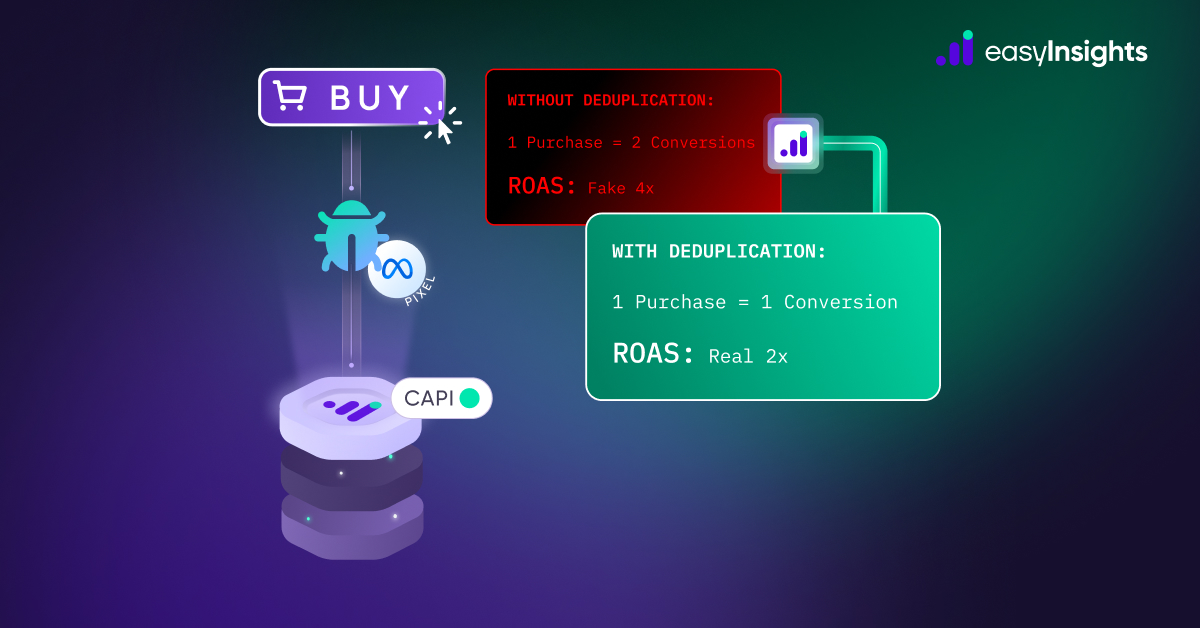
Did advertising bring more customers? Should you invest more in social media or email campaigns? Which channels work together well and deliver the best results? These are just a handful of countless questions that most marketers face when strategizing their marketing efforts.
To answer these questions accurately, marketers need to analyze massive amounts of data and find correlations between different marketing channels while keeping track of how internal and external factors impact marketing outcomes.
Considering the fact that an average consumer engages with brands on at least three to five channels, it can be difficult to measure the impact of various marketing activities and different channels on sales. That is where the Marketing Mix Modelling comes into picture.
Let us understand in this blog what Marketing Mix Modelling is, its benefits for marketers, and how you can do it the right way.
Jump ahead to:
What is Marketing Mix Modelling?
Marketing Mix Modelling (MMM) is a statistical technique that uses large volumes of data to quantify the impact of different marketing channels on a brand’s sales and revenue. MMM’s data-driven approach takes into consideration various internal and external factors to predict and measure the impact of different marketing decisions on business outcomes.
So, is Marketing Mix Modelling the same as attribution modelling? Or are they different?
MMM and attribution modelling are two different marketing analytics. Attribution modelling helps understand what touchpoints in a user’s journey contributed more to driving particular actions that lead to the user’s progression through the sales funnel.
On the contrary, MMM measures the impact of different marketing activities on business outcomes, including sales, revenue, and market share. It helps marketers identify the optimal marketing mix to maximize their ROI. MMM also takes into account external factors like competition and economic conditions when measuring the performance of marketing channels.
Additional Read: Everything You Need to Know About Marketing Attribution Models
Why is Marketing Mix Modelling Important?
Today it is common for brands to run multi-channel campaigns to grow their business. They rely on PPC, PR, content, organic and paid social media, co-selling, promotions, and many more marketing channels. More channels equal more audience and business but also more data for marketers to track.
That is why MMM is so essential. It helps you measure the contribution of each marketing channel towards generating conversions. So you can accurately assess the ROI of your marketing spend on different campaigns and channels.
Let us go over some benefits of Marketing Mix Modelling for businesses:
1. Run Effective Marketing Campaigns
MMM helps marketers analyze data from different marketing channels and measure their performance. As a result, you can easily identify which channels achieve the business objectives and which need more optimization.
2. Optimal Allocation of Marketing Budget
Marketing Mix Modelling also helps create cost-efficient advertising campaigns. You can identify and differentiate the best-performing mix from underperforming ones. So, you can allocate your marketing budget accordingly and improve your returns on investments.
3. Scenario Planning and Testing
MMM is a statistical analysis, so you can also use it to plan and test your marketing strategies before implementing them. By analyzing the impact of different marketing scenarios on business outcomes, you can identify the best marketing mix for your business. This reduces the possibility of marketers making costly mistakes and ensures that marketing spends are distributed efficiently.
How Does Marketing Mix Modelling Work?
Marketing Mix Modelling involves examining different variables to identify successful marketing activities. There are countless variables that a business can include in its MMM exercise depending on its marketing mix. However, all those variables can be categorised into either of the following categories:
1. Marketing Strategies
The first variable your Marketing Mix Modelling must include is your marketing strategies as it directly affects your sales and revenue. Therefore, it includes all your marketing activities, including print, TV, digital, social media, public relations, earned media mentions, etc.
By tracking the success of these marketing strategies, businesses can adjust their marketing efforts to achieve the best potential return on investment.
2. Seasonal Variables
Second, your Marketing Mix Modelling also considers seasonal variables when assessing your customers’ purchase patterns. Seasonal factors help you identify your customers’ behaviour at different times of the year.
For example, demand for products like cold drinks and ice creams is at its peak during summer, while woollens become popular in winter. Thus, by considering seasonal factors, MMM can help you tweak your marketing strategies for better results during specific seasons.
3. Internal Variables
The next variable type to consider for your Marketing Mix Modelling is internal variables, i.e., variables that arise due to the changes you make to your business. Whether it is a product launch, price change, or distribution change, examining these internal factors with MMM will help how internal decisions of your organization impact your sales and revenue. At the same time, you can also identify areas for improvement.
4. External Variables
We put all the factors that affect your sales and revenue but are outside of your control under the external variables category. These include factors like weather, natural disasters, economic conditions, industry trends, competitors’ actions, etc.
Shortcomings of Marketing Mix Modelling
Here are some limitations of MMM:
1. Complexity
MMM models involve analyzing different variables and interactions between those variables. As a result, they may be challenging to interpret and require advanced statistical skills.
2. Lack of Real-Time Models
MMM is driven by historical data, so insights are not always current. Since market conditions change frequently, MMM models cannot consider the impact of sudden changes in the market, like the entry of a new competitor or changes in consumer behavior.
3. Inaccurate Attribution
There is a significant gap between implementing a marketing input (like pricing, ads, etc.) and when they impact sales and revenue. As a result, it is difficult to accurately attribute the impact of an independent variable to dependent variables.
Doing Marketing Mix Modelling Right
Marketing Mix Modelling is a complex analytical process that requires working with enormous amounts of data, proper planning, and careful execution. So, here are 5 steps you must follow when developing your MMM:
1. Define the Marketing Objective
The first step in Marketing Mix Modelling is to define your end goal – the objective of your marketing efforts. For example, the goal can be increasing sales and market share or boosting general brand awareness. Once,you have your objectives set, you can easily select the right KPIs to track for your marketing efforts.
2. Collect Marketing Data
The next step is to gather the data required for analysis. Depending on your objectives and KPIs you are tracking, you will need data from marketing efforts, sales, pricing, promotions, and other elements that affect business outcomes. Also, it is essential to remember that the more data you will have, the more accurate your analysis will be.
3. Data Exploration and Transformation
Once you have collected all necessary data, you must clean and transform it before extracting actionable insights. The step involves identifying missing or outdated data and transforming it into a format ideal for analysis and visualization.
4. Develop and Test Marketing Scenarios
The next marketing mix modelling stage is creating and testing various marketing scenarios. This entails using data to develop a statistical model that evaluates the influence of various marketing efforts on the marketing aim. The model may then be used to simulate multiple scenarios to see how changes in the marketing mix affects the marketing aim.
5. Implement, Monitor, and Optimize
The last phase is to put the marketing mix into action, assess the outcomes, and optimize the marketing plan. This entails implementing the appropriate marketing mix and tracking the results. The analysis should be updated regularly to ensure that the marketing mix remains optimum for the marketing goal.
What are Some Approaches Available for Marketing Mix Modelling?
Here are some popular approaches that are used for marketing mix modelling:
1. Linear Regression Approach
In the linear regression approach for MMM, we assume a linear relationship exists between dependent variables (sales, revenue, etc.) and independent variables. Linear relationship implies that the impact of a marketing mix on the dependent variable is the sum of the coefficients of variables acting independently.
2. Multiplicative Regression Approach
To overcome linear regression limitations, marketers use the multiplicative regression approach for MMM. In this approach, we assume that the impact of independent variables is multiplicative, not additive. This means that the impact of independent variables, like ad spend, price, etc., on sales or revenue is not constant but changes over time.
3. Time-series Analysis
Marketers use the time-series analysis approach in MMM to assess the impact of marketing inputs, like ad spend, price, etc., on sales and other performance metrics over time. Time-series analysis involves analyzing a series of data points taken at regular intervals, such as daily, weekly, or monthly sales data.
What are Automated Tools for Marketing Mix Modelling?
Implementing MMM using the approaches mentioned above can make the entire process cumbersome. But you can use MMM software that automates the process making it easier to create marketing mix models. Here are some ways automation software helps you with MMM:
1. Data Collection
You need data from traditional and digital marketing platforms for marketing mix modeling. Automated MMM software helps you collect data from various sources, including advertisement data, sales data, social media data, and more.
The software collects and aggregates all your marketing data in one platform. You can also schedule automatic data collection at regular intervals, so you always work with the latest marketing data. As a result, data collection becomes faster and less prone to errors and irregularities.
2. Data Cleaning and Preparation
Once you have collected all the data in your automated MMM software, you need to prepare it for analysis and modelling. The software makes it easier to find errors and missing values in data. Once your data is consistent, you can transform it into multiple formats or merge data from different sources into a single dataset and prepare it for the next step.
3. Data Modelling
Without automation software, data modelling for MMM is done using either a spreadsheet tool or coding. The spreadsheet method is lengthy and tedious, while coding requires a team of data scientists and programmers to work on proprietary algorithms.
However, automation software has pre-built algorithms to create data models. Apart from the regression and time-series model, the software offers many advanced statistical models for your MMM.
4. Reporting and Visualization
The automated MMM software also helps you in the decision-making process. You can create reports and visualizations using the software for easier data interpretation. In addition, it helps you communicate your findings to different stakeholders in your team and organization.
Wrapping Up
That was your guide to Marketing Mix Modelling. MMM is essential for marketers in assessing the impact of their diverse marketing efforts on their business outcomes. MMM requires businesses to identify the marketing objective, gather and analyze marketing data, test marketing scenarios, and regularly optimize the marketing strategy.
Bonus Read: How EasyInsights works with Raw Marketing Data for Data Activation and Enrichment

EasyInsights works with raw marketing data for data activation and data enrichment in a few key ways:
Data Collection and Transformation:
- EasyInsights connect directly with your martech allowing it to access and extract the raw first-party data you’ve collected.
- Data Transformation: EasyInsights then cleans, normalizes, and enriches the data to make it usable for activation purposes. This may involve tasks like:
- Formatting data: Ensuring all data points are in a consistent format.
- Handling missing values: Filling in missing data points or removing them according to your preferences.
- Enriching data: Adding additional data points from other sources to create a more comprehensive picture of your customers.
Data Activation:
- Segmentation and Targeting: It allows you to segment your audience based on various criteria like demographics, behavior, and interests using the enriched data.
- Multi-channel Marketing: You can then use these segments to activate your audience across different marketing channels like email, social media, and advertising platforms.
- Customer Relationship Management (CRM): The data can be used to personalize outreach and interactions with customers within your CRM system.
- Marketing Attribution: EasyInsights can help you understand how different marketing channels contribute to conversions and optimize your marketing spend accordingly.
Key Feature:
- Offers features like customer data platform (CDP) capabilities, marketing automation, and campaign management tools.
- Focuses on reverse ETL (extracting data from your warehouse and sending it to marketing tools) and offers pre-built integrations with various marketing platforms.
EasyInsights is a marketer’s preferred tool for first party data activation.
In this age of cross-channel marketing, EasyInsights offers a comprehensive platform to collect, store, and transform all your first-party data.
EasyInsights enhances marketing campaign efficiency in a cookieless landscape with accurate ad signals. It helps brands step away from surface-level metrics and unleash the potential of first-party data to optimize marketing strategies, ensuring a superior Return on Ad Spend (ROAS). It does all this, while being a highly affordable no-code platform with an exceptional customer support apparatus.
Sign up for a demo today to see EasyInsights in action.









